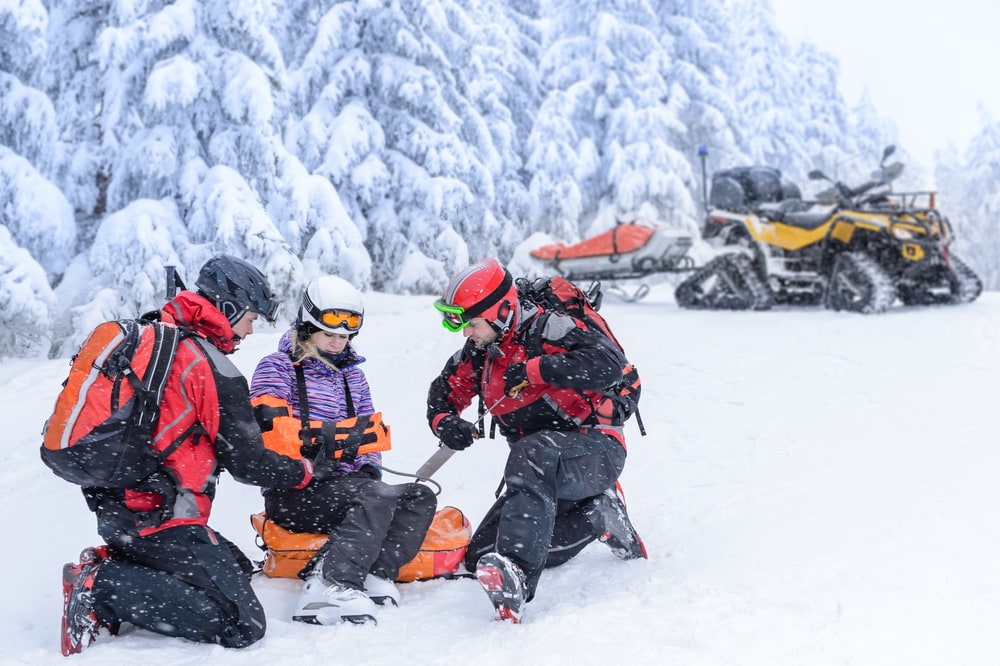
Here on Long Island, it’s time to pull on our coats, hats, scarves and gloves, and prepare to battle through another long winter. Many of us find this to be a particularly difficult season. The shortage of natural light and bitterly cold temperatures make winter a challenge for most of us. In addition, it can be a time of serious orthopedic challenges. Each season presents its own specific set of hardships, summer included, and each of these can lead to unique orthopedic injuries.
As a Long Island orthopedist, we treat countless patients for injuries that can only occur during winter. Between ice, snow, car accidents, skiing and shoveling, winter is a perilous time for many Long Islanders. In fact, orthopedic injuries reach their annual peak during the coldest months. Also, it’s undeniably a time for accidental slips and falls. In this post, we’ll break down some common orthopedic wintertime injuries, plus basic prevention techniques for slips and falls. With these, you’ll be able to avoid any injuries, as well as the irksome pain and stiffness that accompany them.
Winter Orthopedic Injuries (From Slipping & Falling)
Of course, anybody can hurt themselves from slipping and falling. This is especially likely if they suffer a particularly violent fall with a jarring impact. However, senior citizens are far more susceptible to these kinds of accidents. And unfortunately, the natural conditions of winter only amplify the likelihood of an injury.
Driveways, sidewalks and roads covered in ice and snow often leads to both minor and major injuries (again: depending on the impact). Soft tissue injuries are among the most common ailments anyone can sustain from a fall. Usually, these involve sprains, tears, strains and other damage to ligaments, muscles or tendons. Unless there’s noticeable bruising or swelling, these injuries are often invisible. Without treatment, a soft tissue injury can lead to long-term, chronic pain – usually in the back, neck or shoulders.
Depending on a fall’s severity, it’s possible to sustain spinal cord injuries. During a vicious fall, there’s a risk of compressing, injuring or even severing the spinal cord. The pain from a spinal cord injury is formidable – leading to restricted mobility and (in the most severe cases) may even lead to paralysis.
Of course, a significant percentage of slipping/falling injuries are sprains and fractures. Usually, these occur by twisting or landing incorrectly on a wrist, arm, leg or ankle. In most cases, these are painful, but not altogether likely to have any long-term consequences.
It’s possible that you can sustain an injury from a slip or a fall without knowing it right away. You could, potentially, go hours after slipping and falling with zero indication of an injury. However, pain is the most obvious indicator of a problem, and if your pain persists after twenty-four hours, it’s very important to seek treatment from an orthopedist.
Treatment
Obviously, the course of treatment for your injury depends on the injury itself. However, if you do experience a fall, it’s always wise to stop what you’re doing and at least apply some ice to the affected area. Ice will help to reduce any bruising or swelling, and perhaps limit the likelihood of the injury becoming very serious. Apply the ice for increments of fifteen minutes, a few times throughout the day, during the first twenty-four hours in the wake of a slip or fall.
With simple ice applications and rest, a minor injury will steadily resolve itself. However, for more serious afflictions, your orthopedist will likely recommend physical therapy. This non-invasive treatment system focuses on restoring the proper mechanics of your body, thereby increasing range of motion, eliminating pain and preventing any permanent inhibitions.
Preventing Slips & Falls
Naturally, during the cold winter months, it’s always safest to remain indoors during icy, frigid conditions. If roads or sidewalks aren’t cleared from snow, ice or slush, you should assume that it’s inherently unsafe to leave the house. If you can, stay indoors until you’re confident that you won’t have to contend with slippery, unsafe surfaces.
However, if you absolutely have to leave your home, there are a few prevention techniques you can apply to avoid slipping or falling when you’re outdoors. First, of course, be sure to take your time. If you’re navigating icy, slippery surfaces, go slowly and take short, slow steps. Try not to leave the house unless you have the right footwear – anything with extra traction or grip will help to keep you upright.
Use salt (or rock salt) to melt any ice that’s covering your outdoor surfaces like your porch, steps, driveway or walkways. And finally, avoid carrying anything that’s considerably heavy while you move on slippery terrain. Significant weights will disrupt your stability and greatly increase your risk of slipping and falling.
Conclusion – Central Orthopedic Group
Conditions are clearly less-than-ideal in the wintertime. And while these conditions make things significantly less safe for so many of us, simply exercising some very basic precautions can spare us the pain (and irritation) of injuries from slips and falls. But sometimes, even the most prepared among us can experience the occasional accident.
